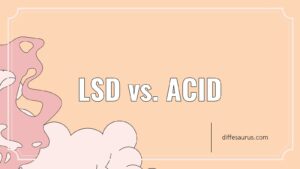Prefix is a set of letters that are used to spell a word. The whole meaning of the word has been changed.
Prefix is a group of letters that spell a root word. Prefix is placed at the beginning and suffix at the end of a base word.
What is the difference between prefixes suffixes and root words?
One way to understand the meanings of new words is to look at the different parts. Adding an affix to the beginning or end of a Latin or Greek root or root word is how new words are formed. The most common prefix is un-, which means not oropposite of, and it is added to the beginning of root words. When affixes are added to the end of words, they are called suffixes. The meaning of the word to more than one wish is changed by adding -es.
What are the 10 examples of prefix?
A group of letters are placed before a word’s root. The word ‘unhappy’ is a combination of the words ‘un-‘ and ‘happy’.
How do you identify a suffix?
A different word class is what the new word is usually called. The table above has changed the verbs in the table from ful to ment, ion, and -ion. For example, if you see a word that ends in -ment, it’s likely to be a nouns.
What is the suffix of eat?
The act of swallowing or eating is referred to asphagia. Wordmeal is one word at a time, word by word. The meaning of Noun Suffixes is engaged in something, associated with something.

What is prefix of able?
The ectives ‘-able’ and ‘-ible’ are used to mean ‘possible, capable of, suitable for or causing’. ‘-able’ is the most common of the two and is used to create new words. The variant ‘-ible’ is only used in older words that have survived into the modern English language.
Is all a prefix?
A prefix is a question about what it means. A group of syllables added to the beginning of a word is called a prefix. It is possible to make new words that are easy to understand in the English language with the help of prefixes. Applying logic to new words and decoding them appropriately will be helped by reviewing a variety of prefix examples.
What does Ed mean in prefix and suffix?
He had crossed the river and there was a participial adjectives indicating a condition or quality.
Is er a suffix or prefix?
The suffixes ‘-er,’ ‘-or,’ and ‘-ar’ are all used to create agency. The most common one is ‘-er’, while ‘-or’ and ‘-ar’ are less common. It can be difficult to decide which is the correct one to use because they perform the same function and are pronounced the same way.

What is a patronymic suffix?
A patronymic, or patronym, can be formed by adding a prefix or suffix to the name. Fitzpatrick was the male patronymic of Patrick a few centuries ago, as was Peter, Donald, or MacDonald. Each of these is an ordinary family name. In Russia, a patronymic and a surname are still used, and in the case of Peter Ilyich Tchaikovsky, it’s a patronymic.
What are examples of suffix able?
You can describe things in new and interesting ways with Able. Adding -able to a word indicates that someone is capable of something. Doughnuts can be dipped into a cup of milk or coffee if they are dunkable.
What are all the suffixes and prefixes?
A word part is added to the beginning of a word. Table 3.2 ‘Common Prefixes’ has the common prefixes studied.



